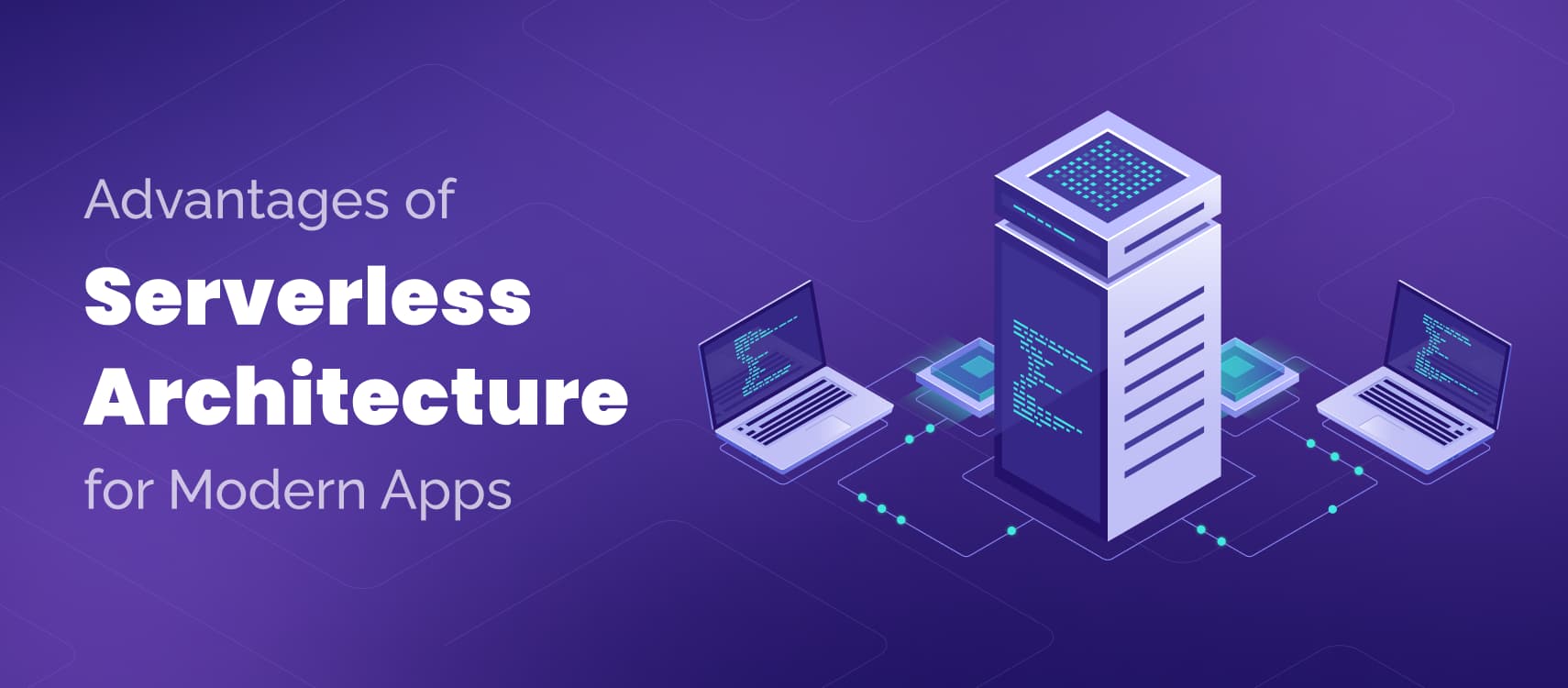Table of Contents
- Serverless Architecture
- Enhanced Developer Productivity
- Elasticity and Scalability
- Cost Optimization
- Faster Time-to-Market
- High Availability and Resilience
- Use Cases for Serverless Architecture
- Challenges and Considerations
- Summarising
In the ever-evolving landscape of software development serverless architecture has emerged as a transformative paradigm that revolutionizes the way modern applications are designed, developed, and deployed. This innovative approach which is also called serverless computing at times, challenges the traditional server-centric model by abstracting infrastructure management and enabling developers to focus solely on code.
Let us now explore some of the most well-known advantages that modern apps can get by leveraging serverless architecture.
Serverless Architecture: Understanding the Basics
Serverless architecture, often referred to as Function as a Service (FaaS), is a cloud computing model that shifts the responsibility of infrastructure provisioning and management away from developers. Instead, developers write discrete units of code known as functions, which are executed in response to specific events triggered by user actions, data changes, or API requests.
Granular Scalability:
Serverless architecture offers granular scalability, allowing applications to automatically scale based on demand.
Functions are executed individually, and each instance of a function can be triggered independently.
This enables efficient resource utilization, ensuring that applications handle varying workloads
without overprovisioning or underutilization.Cost Efficiency:
The pay-as-you-go pricing model of serverless architecture aligns costs with actual usage.
Developers are billed only for the compute resources consumed during function execution, eliminating the need
to provision and pay for idle resources. The cost-efficient approach with pay-as-you-go billing is well known.Reduced Management Overhead:
Serverless architecture abstracts the complexities of server provisioning, configuration, and maintenance.
Developers can focus exclusively on writing code and building features, while the cloud provider handles
underlying infrastructure management. This reduction in operational overhead enables teams to allocate
more time and resources to innovation and development.
Enhanced Developer Productivity
Serverless architecture elevates developer productivity by streamlining various aspects of the
development lifecycle.
Rapid Deployment:
Serverless functions can be deployed quickly and easily, reducing the time required to bring new features to market.
Developers can focus on writing code and testing functions without worrying about infrastructure setup,
leading to shorter development cycles.Focus on Code:
With serverless, developers can concentrate solely on writing high-quality code without concerning
themselves with the underlying infrastructure. This enhances code quality and maintainability,
as developers are free from managing servers, patches, and updates.Efficient Resource Allocation:
Serverless platforms automatically manage resource allocation, ensuring that functions are executed
in optimized environments. Developers no longer need to allocate resources manually, allowing them
to allocate their attention to optimizing code and application logic.
Elasticity and Scalability
One of the key advantages of serverless architecture is its inherent elasticity and scalability.
Auto Scaling:
Serverless platforms handle auto-scaling seamlessly. Functions are automatically scaled up or down
based on incoming events and workloads. This eliminates the need for manual intervention and ensures
consistent application performance even during traffic spikes.Zero Downtime:
Serverless architecture enables applications to handle varying workloads without downtime.
The auto-scaling mechanism ensures that new function instances are spawned as needed,
preventing performance degradation or service interruptions.
Cost Optimization
Serverless architecture offers significant cost advantages, making it an economical choice for businesses.
No Idle Resources:
Traditional server-based models often lead to resource wastage due to provisioning for peak loads.
In serverless, resources are allocated dynamically, ensuring that there are no idle resources.
This efficient resource utilization translates into cost savings.Pay-as-You-Go:
Serverless platforms follow a pay-as-you-go pricing model, where developers are billed only for
the compute resources consumed during function execution. This aligns costs with usage,
allowing businesses to optimize their expenses.Infrastructure Savings:
With serverless, businesses can save on infrastructure costs, as there is no need to purchase,
configure, or maintain physical servers. The cloud provider takes care of infrastructure management,
reducing capital expenditures.
Faster Time-to-Market
Serverless architecture accelerates time-to-market for applications, enabling businesses to respond quickly to market demands and user feedback.
Faster Development Cycles:
The streamlined development process in serverless architecture leads to faster development cycles.
Developers can focus on writing code and building features without getting bogged down by infrastructure-related tasks.Rapid Prototyping:
Serverless architecture is ideal for rapid prototyping and experimentation.
Developers can quickly create and deploy functions to test new ideas and features,
allowing businesses to iterate and innovate faster.
High Availability and Resilience
Serverless architecture enhances application availability and resilience through built-in mechanisms.
Automatic Failover:
Serverless platforms often provide automatic failover and redundancy. If a function instance fails,
the platform automatically restarts it on a healthy host, ensuring minimal downtime and uninterrupted service.Global Availability:
Serverless functions can be deployed in multiple regions, providing global availability
and low-latency access to users around the world. This enhances user experiences and supports businesses with a global user base.
Use Cases for Serverless Architecture
Serverless architecture is well-suited for various use cases across industries.
Web Applications:
Serverless is ideal for building lightweight web applications, microservices, and APIs.
It allows developers to focus on delivering core functionality without the complexities of server management.Real-time Data Processing:
Serverless can be used for real-time data processing tasks, such as data ingestion, transformation, and analysis.
Functions can be triggered by events from data streams, enabling efficient processing of data as it arrives.Batch Processing:
Serverless architecture is effective for batch processing tasks that require periodic execution,
such as data backups, data synchronization, and report generation.
Challenges and Considerations
While serverless architecture offers numerous benefits, there are challenges to consider during adoption.
Cold Start Latency:
Serverless functions experience a slight delay, known as a cold start, when they are invoked for the first time.
This latency can impact applications with strict real-time requirements.Vendor Lock-In:
Adopting a serverless platform may lead to vendor lock-in, as functions are designed to run on specific cloud providers’ platforms.
This may affect portability and migration options.State Management:
Managing state across serverless functions can be complex, especially in applications with multiple interconnected functions.
Proper design and architecture are necessary to handle state effectively.
Summarising
Serverless architecture has ushered in a new era of application development, redefining how modern apps are conceived, developed, and deployed. By abstracting infrastructure management and enabling efficient resource utilization, serverless empowers developers to focus on code and innovation, leading to enhanced scalability, reduced operational overhead, and accelerated time-to-market.










